-
 bitcoin
bitcoin $108221.513755 USD
-0.10% -
 ethereum
ethereum $3817.049350 USD
-1.16% -
 tether
tether $1.000184 USD
-0.03% -
 bnb
bnb $1081.373706 USD
1.55% -
 xrp
xrp $2.367284 USD
-2.30% -
 solana
solana $180.847708 USD
-3.07% -
 usd-coin
usd-coin $0.999936 USD
0.00% -
 tron
tron $0.322230 USD
-0.06% -
 dogecoin
dogecoin $0.190590 USD
-1.92% -
 cardano
cardano $0.626657 USD
-2.42% -
 hyperliquid
hyperliquid $37.280123 USD
6.15% -
 chainlink
chainlink $17.222315 USD
-2.46% -
 ethena-usde
ethena-usde $0.999312 USD
-0.03% -
 stellar
stellar $0.309699 USD
-0.98% -
 bitcoin-cash
bitcoin-cash $475.445788 USD
-1.02%
How to combine EMA with RSI for a powerful trading strategy?
A bullish EMA crossover combined with RSI rising from oversold levels signals high-probability rally potential, especially in altcoins after corrections.
Oct 19, 2025 at 05:36 am
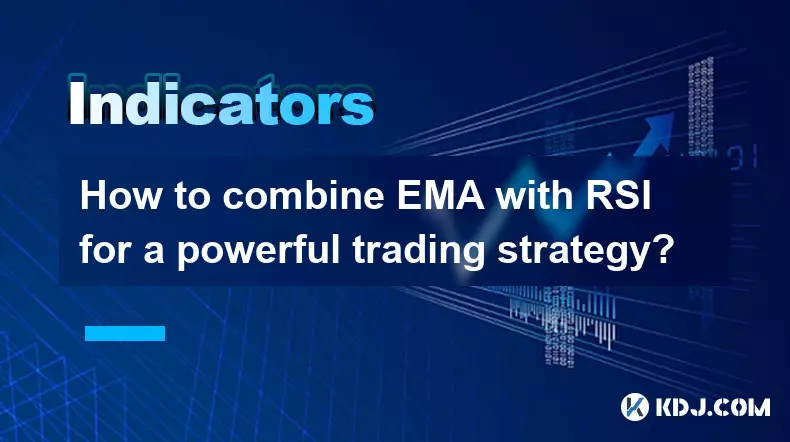
Understanding the Role of EMA in Crypto Trading
1. The Exponential Moving Average (EMA) gives greater weight to recent price data, making it more responsive to new information compared to the Simple Moving Average (SMA). This sensitivity is crucial in the fast-moving cryptocurrency markets where trends can shift rapidly.
2. Traders commonly use the 9-day, 20-day, and 50-day EMAs to identify short- to medium-term trends. When the price consistently trades above a key EMA level, it signals bullish momentum; trading below indicates bearish sentiment.
3. Crossovers between two EMAs—such as the 9 EMA crossing above the 21 EMA—are widely interpreted as buy signals, while the reverse crossover suggests a potential sell opportunity. These crossovers help filter out market noise and highlight directional strength.
4. In volatile crypto environments, EMAs act as dynamic support and resistance levels. For example, during an uptrend, the price may pull back to test the 20 EMA before resuming its upward trajectory, offering strategic entry points.
Leveraging RSI for Timing Entries and Exits
1. The Relative Strength Index (RSI) measures the speed and change of price movements on a scale from 0 to 100, helping traders identify overbought or oversold conditions. An RSI above 70 typically suggests overbought territory, while readings below 30 indicate oversold levels.
2. In trending markets, waiting for RSI to hit extreme levels can lead to missed opportunities. Instead, traders watch for RSI pullbacks into neutral zones (e.g., dropping to 50–60 in an uptrend) as confirmation of healthy consolidation before continuation.
3. Divergences between price action and RSI often precede reversals. A price making higher highs while RSI forms lower highs signals weakening momentum and possible trend exhaustion—a critical warning sign in speculative assets like Bitcoin or Ethereum.
4. Using RSI in conjunction with candlestick patterns enhances signal reliability. For instance, a bullish engulfing pattern forming at the same time RSI exits oversold territory increases confidence in a long trade.
Combining EMA and RSI for High-Probability Setups
1. A robust strategy involves entering long positions when the price crosses above a major EMA (like the 20-period) and the RSI moves above 50 from below, indicating both trend alignment and strengthening momentum.
2. Conversely, short setups are considered when the price drops below the 50 EMA and RSI falls under 50 after being above it, confirming bearish control. This dual-filter approach reduces false signals common in choppy crypto charts.
3. During strong trends, traders can hold positions even if RSI enters overbought or oversold zones, provided the price remains firmly above or below the EMA. Trend-following in crypto often rewards patience over rigid oscillator rules.
4. One powerful setup occurs when a bullish EMA crossover coincides with RSI emerging from oversold levels—this confluence significantly increases the odds of a sustained rally, especially after extended corrections in altcoins.
5. Timeframe alignment strengthens results. For example, a daily chart showing price above the 50 EMA with RSI above 50 supports taking intraday longs on the 4-hour chart when similar conditions appear, creating multi-layered conviction.
Risk Management and Practical Execution
1. Position sizing should account for the inherent volatility of digital assets. Even with strong EMA-RSI confluence, allocating no more than 2–5% of capital per trade helps sustain drawdowns during inevitable losing streaks.
2. Stop-loss orders can be placed just below the recent swing low for longs or above the swing high for shorts, ideally aligned with EMA rejection points. Trailing stops adjusted to the 9 EMA allow profits to run while protecting against sudden reversals.
3. Avoid applying this strategy during low-volume periods or major news events, such as protocol upgrades or regulatory announcements, which can distort technical signals and trigger erratic price swings.
4. Backtesting across multiple cryptocurrencies reveals that EMA-RSI combinations perform best in moderately volatile, liquid coins like BNB, SOL, or ADA, rather than extremely erratic microcaps prone to manipulation.
Frequently Asked Questions
What EMA periods work best with RSI in crypto trading?The 9 and 21 EMA pair is popular for short-term trading, while the 50 and 200 EMA combination suits swing traders. Combining these with RSI(14) provides balanced responsiveness without excessive noise.
Can EMA and RSI be used on all timeframes?Yes, but effectiveness varies. On lower timeframes like 15-minute charts, signals are frequent but less reliable. Daily and 4-hour charts offer higher-quality setups due to reduced market noise and stronger institutional participation.
How do you handle conflicting signals between EMA and RSI?When EMA suggests a trend but RSI shows overbought/oversold extremes, wait for price confirmation. If the trend is strong, RSI may remain in extreme zones—prioritize the trend direction unless divergence appears.
Is this strategy suitable for automated bots?Absolutely. Many algorithmic systems integrate EMA crossovers with RSI thresholds to trigger entries and exits. However, parameters must be optimized for specific assets and monitored for performance decay over time.
Disclaimer:info@kdj.com
The information provided is not trading advice. kdj.com does not assume any responsibility for any investments made based on the information provided in this article. Cryptocurrencies are highly volatile and it is highly recommended that you invest with caution after thorough research!
If you believe that the content used on this website infringes your copyright, please contact us immediately (info@kdj.com) and we will delete it promptly.
- Essex Post Office, 5p Coins, and King Charles: A Royal Mint Revelation!
- 2025-10-23 10:30:16
- Waymo's Newark Airport AV Tests: Alphabet's AI Gamble Pays Off?
- 2025-10-23 10:30:16
- King Charles 5p Coins: A Royal Flush in Your Pocket?
- 2025-10-23 10:35:18
- Solana, Crypto Advisory, and Forward Industries: A New York Minute on the Future of Finance
- 2025-10-23 08:51:22
- MAGACOIN: Ethereum Whales Dive into the Hottest Presale of 2025
- 2025-10-23 08:51:22
- Kadena's End of the Road? KDA Token Plummets Amid Project Abandonment
- 2025-10-23 08:55:34
Related knowledge
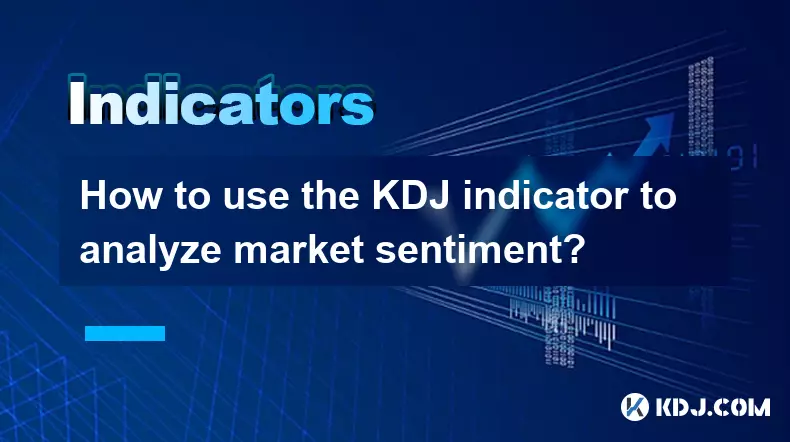
How to use the KDJ indicator to analyze market sentiment?
Oct 18,2025 at 07:18pm
Understanding the KDJ Indicator in Cryptocurrency Trading1. The KDJ indicator, also known as the Stochastic Oscillator, is a momentum-based technical ...
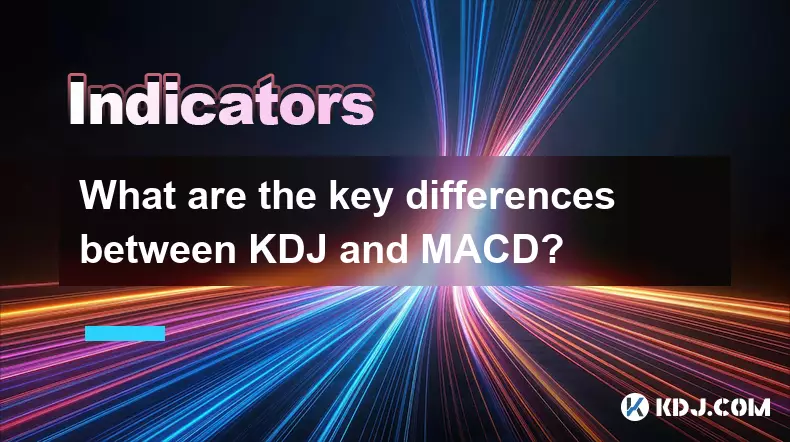
What are the key differences between KDJ and MACD?
Oct 18,2025 at 04:54am
KDJ Indicator: Core Mechanics and Usage1. The KDJ indicator is a momentum oscillator that combines the features of the Stochastic Oscillator with an a...
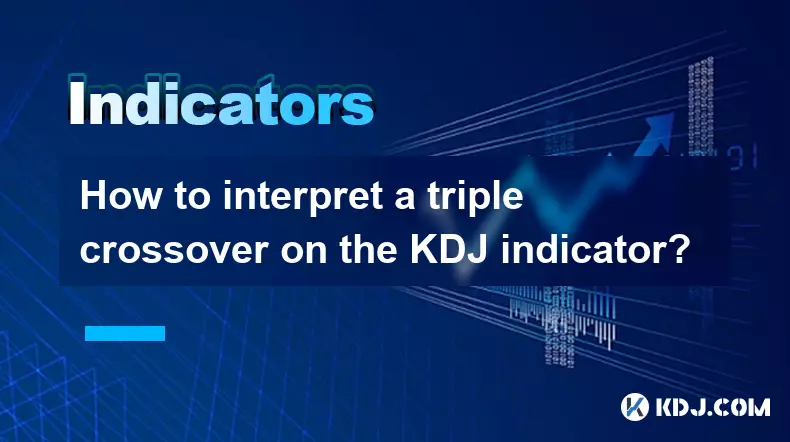
How to interpret a triple crossover on the KDJ indicator?
Oct 18,2025 at 01:54pm
Understanding the Triple Crossover in KDJ Indicator1. The KDJ indicator, a derivative of the Stochastic Oscillator, consists of three lines: K, D, and...

What's the best timeframe for the KDJ indicator?
Oct 20,2025 at 03:01pm
Understanding the KDJ Indicator in Crypto TradingThe KDJ indicator, an extension of the stochastic oscillator, is widely used in cryptocurrency tradin...
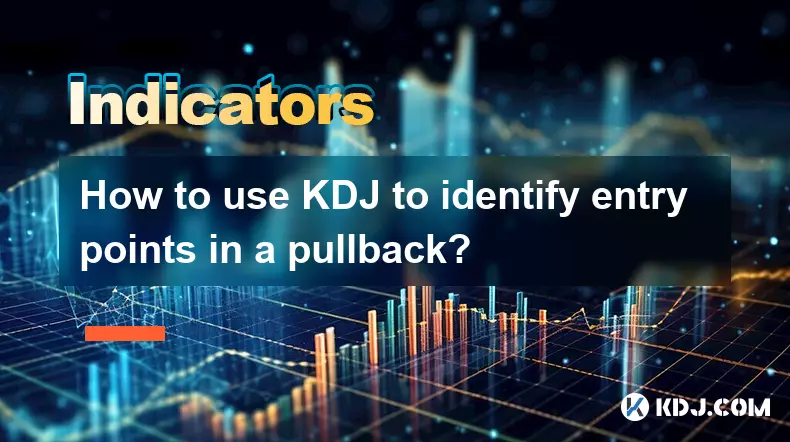
How to use KDJ to identify entry points in a pullback?
Oct 18,2025 at 09:36am
Understanding KDJ in the Context of Pullbacks1. The KDJ indicator, an extension of the stochastic oscillator, consists of three lines: %K, %D, and %J....
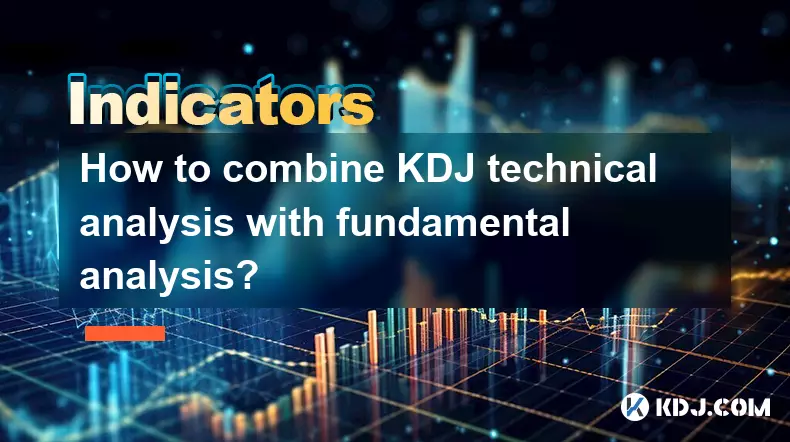
How to combine KDJ technical analysis with fundamental analysis?
Oct 20,2025 at 11:55pm
Understanding KDJ in the Context of Cryptocurrency Markets1. The KDJ indicator, originating from stochastic oscillator principles, is widely used in c...

How to use the KDJ indicator to analyze market sentiment?
Oct 18,2025 at 07:18pm
Understanding the KDJ Indicator in Cryptocurrency Trading1. The KDJ indicator, also known as the Stochastic Oscillator, is a momentum-based technical ...

What are the key differences between KDJ and MACD?
Oct 18,2025 at 04:54am
KDJ Indicator: Core Mechanics and Usage1. The KDJ indicator is a momentum oscillator that combines the features of the Stochastic Oscillator with an a...

How to interpret a triple crossover on the KDJ indicator?
Oct 18,2025 at 01:54pm
Understanding the Triple Crossover in KDJ Indicator1. The KDJ indicator, a derivative of the Stochastic Oscillator, consists of three lines: K, D, and...

What's the best timeframe for the KDJ indicator?
Oct 20,2025 at 03:01pm
Understanding the KDJ Indicator in Crypto TradingThe KDJ indicator, an extension of the stochastic oscillator, is widely used in cryptocurrency tradin...

How to use KDJ to identify entry points in a pullback?
Oct 18,2025 at 09:36am
Understanding KDJ in the Context of Pullbacks1. The KDJ indicator, an extension of the stochastic oscillator, consists of three lines: %K, %D, and %J....

How to combine KDJ technical analysis with fundamental analysis?
Oct 20,2025 at 11:55pm
Understanding KDJ in the Context of Cryptocurrency Markets1. The KDJ indicator, originating from stochastic oscillator principles, is widely used in c...
See all articles










































































